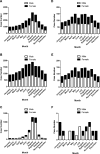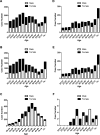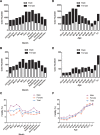Pesticide poisoning in Zhejiang, China: a retrospective analysis of adult cases registration by occupational disease surveillance and reporting systems from 2006 to 2010
- PMID: 24270833
- PMCID: PMC3840342
- DOI: 10.1136/bmjopen-2013-003510
Pesticide poisoning in Zhejiang, China: a retrospective analysis of adult cases registration by occupational disease surveillance and reporting systems from 2006 to 2010
Abstract
Objective: Despite the rapid industrialisation and urbanisation over the past 30 years, agriculture is one of the largest economic sectors in China and the unregulated use of pesticides result in extensive pesticide poisoning. The objective of this study was to analyse pesticide poisoning cases registration received by Zhejiang Provincial Center for Disease Control and Prevention, China.
Design: Register-based study.
Setting: Cases registered regarding pesticide poisoning. Data were obtained from the Occupational Disease Surveillance and Reporting Systems in Zhejiang province from 2006 to 2010, which contains anonymous records representing general population of Zhejiang province, China.
Participants: All cases registered as pesticide poisoning were identified.
Primary outcome: Monthly and age-group pesticide poisoning death rates were calculated.
Results: A total of 20 097 pesticide poisoning cases with 1413 deaths were recorded during the study period. There were 10 513 male pesticide poisoning cases with 782 deaths, and 9584 females with 631 deaths. Pesticide poisoning occurred mostly in non-occupational exposure (79.86%), in which the majority (85.77%) of the cases was of intentional pesticide poisoning. The occupational exposure was most common in men during the farming season. The death rate increased stepwise with age, and the pesticide suicide rate was higher in the older age group.
Conclusions: Pesticide poisoning remains a major health problem in China, and further recommendations to reduce the pesticide poisoning are required.
Keywords: Epidemiology; Occupational & Industrial Medicine.
Figures





References
-
- WHO The global burden of disease: 2004 update. World Health Organization, Geneva, 2008. http://www.who.int/evidence/bod (accessed 6 Jun 2012).
-
- Chen SY, Wang HF, Yin Y. The reporting system of acute pesticides poisoning and general situation of pesticides poisoning in China. Zhonghua Lao Dong Wei Sheng Zhi Ye Bing Za Zhi 2005;23:336–9 - PubMed
LinkOut - more resources
Full Text Sources
Other Literature Sources
Miscellaneous
